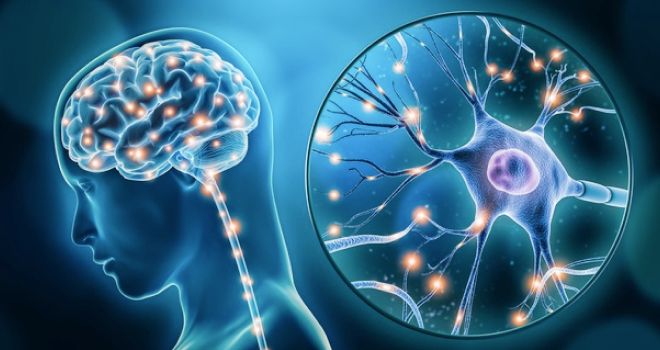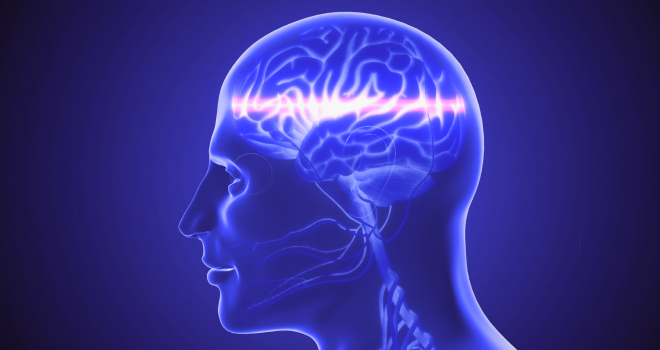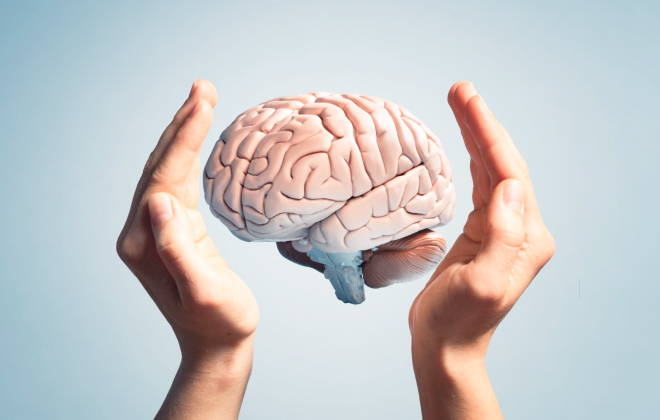


The brain is a complex organ that controls all bodily functions. It is responsible for our thoughts, emotions, memories, and actions. It has billions of neurons and trillions of connections that allow us to perceive, learn, adapt, and interact with the world. Despite its small size, the brain consumes a lot of energy and consists of specialised regions working together for our conscious experience.
This guide aims to explore the wonders of the human brain and provide a comprehensive understanding of Neurology – the medical field associated with the diagnosis and treatment of the brain and the nervous system.
Let us start from the very beginning and understand the complex organ which controls our entire body.
The brain is the epicentre of our existence. It is a complex network of intricate structures and functions that govern every aspect of our lives, from the mundane to the extraordinary.
We can categorise the brain’s physical structure into three main regions:
You must have heard of the term “grey matter”. That is actually the cerebral cortex, the outermost layer of the brain. It is responsible for many of our higher cognitive functions, including reasoning, problem-solving, and conscious thought. This is where the magic of human intelligence happens. The cerebral cortex is divided into different regions, each associated with specific functions.
Beneath the cerebral cortex lies the limbic system, often referred to as the “emotional brain.” This complex network of structures, including the amygdala and hippocampus, regulates our emotions, motivation, and memory. It is the limbic system that helps us process feelings, from joy and love to fear and anger.
At the base of the brain is the brainstem, a primitive but vital part of our neural anatomy. It controls automatic functions such as breathing, heart rate, and basic reflexes. The brainstem connects the brain to the spinal cord and ensures our survival without us even thinking about it.
These are the building blocks of the brain, responsible for transmitting information. Neurons are characterised by a few key components:

Neurons communicate through a remarkable electrochemical process. When a neuron receives signals from dendrites, it processes this information and decides whether to send an electrical signal down its axon.
This signal travels at incredible speed, and when it reaches the end of the axon, it triggers the release of neurotransmitters into the synapse.
The exploration of how the brain comprehends information and processes emotions is a multifaceted and continuously evolving field of study within the realms of neuroscience and psychology.
The brain processes information through a network of interconnected neurons, using electrical and chemical signals. Here are some key aspects of information processing in the brain:
Emotions are complex mental and physiological states that involve various brain regions and neurochemical processes. Here’s a simplified explanation:
Information processing and emotions are closely intertwined. Emotions can influence our perception, attention, and memory.
For example, a strong emotional experience can enhance memory formation. Conversely, cognitive processes can also regulate and modulate emotions, as seen in cognitive-behavioural therapy.

One of the brain’s most astonishing features is its plasticity. This term refers to the brain’s ability to reorganise itself in response to learning, injury, or changes in the environment. Whether you’re mastering a new language or recovering from a traumatic brain injury, the brain adapts to the challenge.
Learning to play a musical instrument can bring about positive changes in the brain, enhancing motor skills and auditory processing. On the other hand, if the brain is damaged, like in a stroke, it can adapt by rewiring itself to make up for lost abilities.

Neurology, a branch of medicine dedicated to the study and treatment of disorders related to the nervous system, holds significant importance in overall human health. This specialisation treats a wide array of conditions including stroke, epilepsy, Alzheimer’s disease, Parkinson’s disease, multiple sclerosis, and various peripheral nerve disorders.
Neurologists possess profound knowledge and expertise in understanding how the brain, spinal cord, nerves, and muscles function together to facilitate bodily functions and cognitive processes. With advanced diagnostic techniques such as magnetic resonance imaging (MRI) and electroencephalography (EEG), neurologists can effectively identify and manage neurological issues using both pharmaceutical interventions and non-pharmacological therapies.
Our journey through neurology takes a turn toward the vital topic of mental health. Mental health disorders are a complex, multifaceted domain that impacts millions of lives worldwide.
Mental health disorders, often referred to as psychiatric or psychological disorders, encompass a wide range of conditions that affect an individual’s emotional, psychological, and cognitive well-being. They are far more common than one might think. In fact, it is estimated that nearly one in four people worldwide will experience a mental health disorder at some point in their lives.
Mental health disorders are not solely caused by one factor; they result from an intricate interplay of genetic, biological, environmental, and psychological influences. For example, genetics may predispose someone to a condition, but environmental stressors or trauma can trigger its onset.
Understanding these complex interactions is essential for both prevention and treatment. Early intervention and appropriate care can make a significant difference in managing these conditions.

Depression and anxiety disorders, like General Anxiety Disorder and social anxiety disorder, are mental health conditions that cause ongoing feelings of sadness, fear, or worry. They are caused by imbalances in neurotransmitters, such as serotonin, and can result from genetic factors or environmental influences. These conditions not only affect mental health but also impact brain chemistry and function.

Schizophrenia is a serious mental disorder that affects thinking, emotions, and perception. Studies show that brain abnormalities such as enlarged ventricles and altered connectivity between brain regions may play a role in the condition. It is considered a neurodevelopmental disorder with a strong mental health component.

Bipolar disorder involves extreme mood swings, including episodes of mania and depression. It is associated with alterations in brain structure and function, including changes in the prefrontal cortex and limbic system. The condition often has a genetic component and can significantly affect mental health and daily functioning.

Alzheimer’s disease is a progressive neurodegenerative disorder that primarily affects memory and cognitive function. It leads to significant mental health challenges for individuals and their families. The accumulation of abnormal proteins such as beta-amyloid and tau in the brain disrupts neural function and causes cognitive decline.

Epilepsy is a neurological disorder characterised by recurrent seizures. Seizures can have a profound impact on an individual’s mental health, leading to anxiety, depression, and social isolation. The abnormal electrical activity in the brain during seizures can also affect cognitive function.

TBIs result from head trauma and can lead to a range of cognitive and emotional challenges. Depending on the severity and location of the injury, TBIs can cause mood disturbances, personality changes, and cognitive impairments, all of which can affect mental health.
Mental health is not solely about managing disorders; it encompasses overall well-being. Just as we care for our physical health through exercise and a balanced diet, we must also prioritise our mental health.
Practises such as mindfulness, stress management, maintaining social connections, and seeking professional help when needed all contribute to mental well-being. In a world where the importance of mental health is increasingly recognised, taking steps to nurture our minds is a vital aspect of overall health.
Treatment for neurological disorders is diverse and tailored to the specific disorder, its severity, and the patient’s requirements. Neurological disorders include epilepsy, multiple sclerosis, Alzheimer’s disease, Parkinson’s disease, and more. Treatments encompass various approaches.
Physical therapy is often used for conditions affecting movement, such as stroke or traumatic brain injury. Physical therapy helps improve muscle strength, coordination, and mobility.
Occupational therapy focuses on helping patients regain skills for daily living, such as dressing, eating, and grooming. It is most commonly used in the rehabilitation of patients after they have suffered a stroke.
This therapy is used for patients with speech and communication difficulties due to conditions like stroke, traumatic brain injury, or neurological disorders like aphasia.
Surgery is usually considered for extreme cases or where all the above-mentioned remedies are found ineffective. Some of the common kinds of surgeries performed are:

The journey through the mysteries of the brain has been both enlightening and awe-inspiring. While we’ve only scratched the surface of this vast field of study, we hope this guide has provided you with a newfound appreciation for the incredible organ that governs our every thought, emotion, and action.
The brain’s complexity is indeed a marvel of nature, and as our understanding continues to deepen, we are on the brink of even greater discoveries that will shape the future of neurology and our understanding of the human mind.
Sources
Spread the love, follow us on our social media channels